Editors: Erika Dyck, Patrick Farrell, Beatriz Caiuby Labate, Clancy Cavnar, Ibrahim Gabriell and Glauber Loures de Assis
Abstract:

This collection of short essays examines the place of women in the history of psychedelics. While some of the subjects are clearly pioneers in their own right, the authors in this collection go beyond merely adding women to the past to explore some of the significant ways that women have contributed to psychedelic knowledge. Blending historical and anthropological approaches and a series of interviews, this collection taps into women’s networks around the world and throughout the 20th century to reveal some of the sophisticated and creative ways that women have influenced our understanding of psychedelics, and how they continue to protect these stories as we face a psychedelic future. Our collection intentionally moves beyond an American set of stories, teasing out networks in Latin America. This collection brings together authors from the Chacruna Institute and Chacruna Latinamérica to engage readers in conversations that move across time and place throughout the Americas. Our collection is the first of its kind in balancing non-English contributions exploring contexts outside the United States. Translated texts reveal different cultural contexts in which women have contributed to this enduring history.
Dyck, E., Farrell, P., Labate, B. C., Cavnar, C., Gabriell, I. y Assis, G.L. (eds.). (2022). Mujeres y psicodélicos: Descubriendo las voces invisibles. Instituto Chacruna/Lunaria Ediciones.
An English version of Women and Psychedelics will be published in 2023 by Synergetic Press.
Click Here for the Launch Event of the Book.
Editor’s Biographies:

Erika Dyck, Ph.D. (History), is a Professor at the University of Saskatchewan, and a Canada Research Chair in the History of Health & Social Justice.Erika is also part of Chacruna’s Board of Directors and hosts the series “Women in the History of Psychedelic Plant Medicines.”
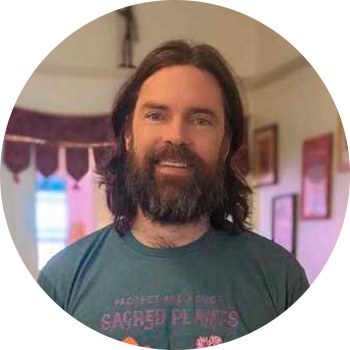
Patrick Farrell is an editor and writer living in Toronto. He is part of the Chacruna Chronicles editorial team, where he supports our series on the history of women in psychedelics.
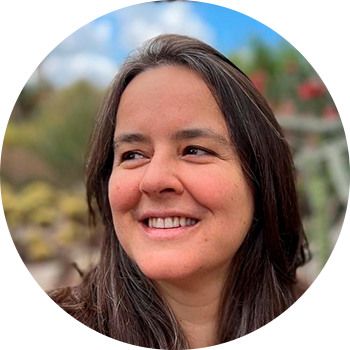
Bia Labate has a PhD in anthropology. She has published 24 books about psychedelic plant medicines, shamanism, religion, ritual, drug policy and social justice. She is Co-Founder and Executive Director of the Chacruna Institute.

Dr. Clancy Cavnar is a licensed psychologist who works in a private practice in San Francisco. She is Co-Founder and a member of the Board of Directors of the Chacruna Institute. See also: https://www.drclancycavnar.com/

Ibrahim Gabriell is Communications and Editorial Associate of Chacruna Latinoamérica in Mexico. He is also co-founder of Vía Synapsis and a member of the psychonaut collective MindSurf.
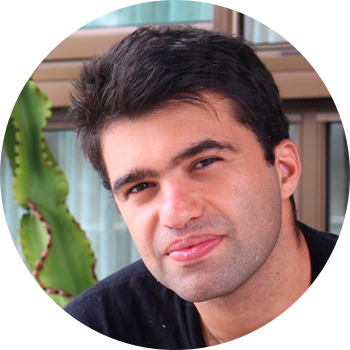
Glauber Loures de Assis has a PhD in Sociology. He is currently the president of Céu da Divina Estrela, a brazilian Santo Daime church, and member of Chacruna’s Ayahuasca Community Committee.
Table of Contents
Click the > arrow to read the abtract
Introduction
Erika Dyck, Ibrah Gabriell, Patrick Farrell, Domenica Medina Sanchez, Beatriz Labate, Clancy Cavnar
Pioneers
Susi’s Tram Ride: Recognizing the First Woman to Take LSD
Erika Dyck and Maria Mangini
Come take a psychedelic tram ride into psychedelic history. The discovery of LSD is associated with Albert Hofmann’s famous April 1943 self-experiment, and his bicycle ride home and into the annals of psychedelic history. Less known, was that Hofmann’s junior lab assistant Susi Ramstein was pedaling there beside him; later that spring, Susi became the first woman to take LSD. Historian Erika Dyck and scholar, midwife, and founder of the Women’s Visionary Congress, Maria Mangini, recount Susi’s role in LSD’s birth to offer a glimpse of an extraordinary young woman whose place in this important moment will surprise and inspire.
Esther Jean Langdon: half a century of research
Isabel de Rose
The American Anthropologist Esther Jean Langdon helped expand Western scientific and ethnographic perspectives on South American Indigenous peoples. Rejecting flawed Western conceptions of Indigenous religiosity, especially shamanism, Langdon described how Indigenous people in Colombia and Brazil experienced shamanism as a cosmological system. Isabel de Rose traces Langdon’s decades-long contributions to the study of shamanism, which continue to help us understand the unique significance of shamanic worldviews and practices.
Mescaline Scribe, Simone de Beauvoir and J. P. Sartre
Patrick Farrell
Following its synthesis in 1918, mescaline intrigued writers and artists as a way to challenge ordinary habits of perception. Two such examples were French philosophers John Paul Sartre and Simone de Beauvior. Beauvoir’s memoirs record Sartre’s intense mescaline experience, offering a memorable early account of a psychedelic use devoid of Indigenous or even therapeutic characteristics. Patrick Farrell shows how Beauvoir’s evocative description of Sartre’s bad trip remains as vivid as ever.
Heroines of Mescaline Leni Alberts
Ivo Gurschler
Ivo Gurschler’s profile of the life and times of the physician Leni Alberts also describes a little-known moment in the history of mescaline. In Breslau (in modern-day Poland), Alberts conducted some of the first clinical experiments with synthesized mescaline in the interwar period. Gurschler shows how Alberts’ pioneering work exhibited a prescient understanding of many important features of today’s therapeutic approaches to psychedelics.
Mrs. Amada Cardenas: Keeper of the Peyote Gardens
Stacy B. Schaefer
Stacy Schaefer’s portrait of Mrs. Amada Cardenas of south Texas, depicts an extraordinary woman carrying forward the legacy of her family as a peyotero—peyote dealer. Amada’s extraordinary compassion and inspiring respect for peyote and its unique healing power caused her to open her home—Peyote Gardens—to anyone seeking help from the cactus. Her legacy is lovingly captured in this homage to her contributions to the preservation and spiritual use of peyote.
Another Aspect of Reality: Maria Nys Huxley’s Influence on Psychedelic History
Andrea Ens
Maria Nys Huxley, first wife to Aldous Huxley, holds an important place in the early annals of Western psychedelic history. Maria was a key participant and supporter in her husband’s psychedelic experiments. Andrea Ens explores Maria’s early ideas about the nature of the psychedelic experience and its relationship to mental health and illness, which influenced both Aldous and Humphry Osmond following her untimely death in 1955.
“Please Write Up Your Work!”: Laura Archera Huxley as a Psychedelic Pioneer
Andrea Ens
Andrea also writes about Laura Archera Huxley, Aldous’ second wife, who, like Maria, occupies a significant place in modern psychedelic history. Long before she deciphered her dying husband’s scrawled wish to be injected with LSD, Laura was his psychedelic confidant and co-experimenter. Following Aldous’ death in 1963, Andrea describes Laura’s continued prominence in the development of US psychedelic culture. Like Maria, Laura too was struck by the therapeutic and healing potential of psychedelics, which she expounded in her writings and other pursuits.
Nina Graboi: A Forgotten Woman in Psychedelic Lore
Chris Elcock
Nina Graboi was a pioneering psychedelic explorer in the post-war period who rejected the assigned role of subdued housewife. Chris Elcock’s essay recounts Graboi’s remarkable life, from her early friendship with Timothy Leary, and immersion in New York City’s fledgling psychedelic scene, to her leadership of the radical Center of the League of Spiritual Discovery. Graboi emerges as an independent thinker and actor in these psychedelic and countercultural circles.
Wilma Mahua Campos, Shipibo Ayahuasquera
Samantha Black
Wilma Mahua Campos is a Shipibo ayahuasquera living in the Ucayali region of the Peruvian Amazon, where she continues in her family’s tradition as a steward of sacred plant medicine. This interview, conducted and translated by Samantha Black, offers a precious glimpse into the life and activities of a master ayahuasquera, as she confronts the drastic pressures and changes to her community’s traditions in the face of constant colonial depredations.
Dream and ecstasy in the Mesoamerican world. Interview with Dr. Mercedes de la Garza
Osiris González Romero
Dr. Mercedes de la Garza is professor emeritus at Mexico’s National Autonomous University, where she accomplished ground-breaking research into sacred plant use in South American history. In this interview by contributor Osiris González Romero, Dr. de la Garza describes her early work in pre-contact Nahuatl and Mayan religions, and her special focus on shamanism. Her candid interview offers the views of an accomplished scholar looking back, as well as advice to younger researchers entering the field.
Betty Eisner: Heroine with a Hitch?
Tal Davidson
Tal Davidson’s essay discusses the complicated legacy of pioneering psychedelic therapist Betty Eisner. Davidson tells the story of the death of a client in Eisner’s care, and explores some of the factors that may have contributed to the tragedy. Confronting both the light and the dark of this notable figure in Western therapeutic psychedelics disabuses us of unrealistic frameworks, as we explore some of complicated actions of prominent individuals in this history.
Lauretta Bender: Seminal Psychiatrist & Forgotten Psychedelic Pioneer
Chris Elcock
The prominent psychiatrist Lauretta Bender carried out significant and little-known work with LSD in the 1950s and 60s. Chris Elcock traces Bender’s accomplished career, and describes her pioneering and still-controversial use of graduated doses of LSD and psilocybin to treat children. While the growing stigma surrounding psychedelics caused her to distance herself from this early work, Bender’s full psychedelic contributions remain to be uncovered.
The Wonderful and Absurd Adventures of Rosemary Woodruff Leary: Fashion Icon, Fugitive, and Psychedelic Pioneer (Part One)
James Penner
The first of James Penner’s two-part series on Rosemary Woodruff, describes her transition from stifled young housewife in an abusive marriage to muse and loving companion to Timothy Leary at the peak of his psychedelic guruism. In a relationship characterized by intensity and motion, their early years were rife with conflict and legal troubles, up to the point that Rosemary decided to break her husband out of jail, which is recounted in part two.
The Wonderful and Absurd Life of Rosemary Woodruff Leary: Fashion Icon, Fugitive, and Psychedelic Pioneer (Part Two: Freedom and Unfreedom)
James Penner
The scope of Rosemary Woodruff’s role in Leary’s famous prison escape in 1970 was little known or referred to in accounts of the famous incident. James reveals Rosemary to have been a key participant, working behind the scenes to raise money and help organize. In the years of exile that followed for the fleeing couple, Rosemary’s hope for a quiet life were in conflict with the constant hijinks that surrounded America’s self-proclaimed “High Priest of LSD.”
Jane Osmond: The Wonder of Weyburn
Erika Dyck
Erika Dyck’s profile of Jane Osmond casts a little light on her life, and shows how psychedelic history would be much different without these often nameless, voiceless supporting figures—often women—in the background. Husband to psychedelic psychiatrist Humphry Osmond, Jane was very comfortable in this emerging psychedelic community in 1950s North America. The Osmonds represent an important aspect to pre-1960s Western psychedelia, one that while not counterculture, was nonetheless radical in its own patient and supportive way.
Feminism in Action
“A ‘Dose’ of Radical Christianity”: Psychedelic Therapy with Dr. Florence Nichols
Andrew Jones
Andrew Jones offers a surprising and eye-opening account of Canadian psychiatrist and Christian missionary, Dr. Florence Nichols. Influenced by pioneering LSD therapist Ronald Sandison, Nichols practiced a form of “clinical theology,” which sought to marry clinical techniques with approaches to psychological well-being found in church practices. Nichols remained a vocal defender of psychedelics and mental health care deserves recognition among Canada’s pioneering psychedelic forebearers.
Psychedelic Saskatchewan: Kay Parley
Genvieve Paiment
Kay Parley is an incredible and understated figure in the history of psychedelics. Genvieve Paiment thoughtfully explains why we should pay attention to Kay’s story. Institutionalized after a psychotic break, Kay learned first hand what it was like to experience psychotic symptoms. Over time, she made peace with her psychosis and re-entered the psychiatric institution in the 1950s as a nurse, working alongside Humphry Osmond. Kay’s own LSD experience gave her insight into her psychosis and the therapeutic value of psychedelics in an effort to confront discrimination levelled at people with major mental illnesses.
Of Mediums and Mind-Manifestors: Eileen Garrett and Psychedelic Experience
Patrick Barber
Eileen Garrett is better known as an internationally renowned psychic than a supporter of psychedelics. But, Patrick Barber explores how one of the most famous mediums of the 20th century became a treasured member of mid-century psychedelic literary circles. A close personal friend of both Aldous Huxley and Humphry Osmond, Garrett’s participation in psychedelic theorizing reminds us of some of the radical and unorthodox influences that nourished psychedelic experimentation in the 1950s.
The Cost of Omission: Dr. Valentina Wasson and Getting Our Stories Right
Amy Bartlett and Monnica Williams
When Life magazine published the story about Robert Gordon Wasson meeting María Sabina, they downplayed one small detail: Valentina Pavlova Wasson, Gordon’s wife, was a critical participant in this encounter. Valentina was a physician and ethnomycologist who wrote a definitive book on the study of mushrooms in her native home, Russia. Amy Bartlett and Monnica Williams recentre this story on Valentina, highlighting her contributions to this historic moment.
María Sabina, Mushrooms, and Colonial Extractivism
Osiris González Romero
María Sabina is probably the most famous woman associated with psilocybin mushrooms, owing to her famous encounter with American banker Gordon Wasson. Their meeting was published in Life magazine in 1957, drawing international attention to the Mazatec people and their use of sacred mushrooms. Osiris González Romero links her to a longer legacy of Aztec traditions, revealing her place at an intersection of plants, people, and colonialism. This article explores the circumstances that led to their famous meeting, which launched sacred mushrooms into the American consciousness, with life-changing consequences for María.
Kathleen Harrison: Wisdom, Endurance, and Hope – Reflections from a Psychedelic Woman
Erika Dyck
Treated carefully, and respectfully, psychedelics offer hope. Kathleen Harrison has dedicated her life to exploring how psychedelics have been understood, remembered, cultivated and used around the world. With long-standing relationships especially in Mexico, Kathleen is a tireless advocate for studying psychedelic ecologies. Arguably overshadowed by her husband Terence MacKenna in the 1980s and 1990s, Kathleen reminds us in this candid interview that she was an integral player in her own right. She suggests that psychedelics offer precious opportunities to learn from one another, embrace diversity, and challenge conventions, particularly when we balance respect for plants with respect for people.
Spotlight on Betsy Gordon and the Psychoactive Substances Research Collection
Stephanie Schmitz
Betsy Gordon is not a household name, not even in psychedelic circles. But, archivist Stephanie Schmitz suggests that without Betsy’s foresight much of the psychedelic history we have come to enjoy would not be possible. An ardent collector, Betsy is fundamentally important for initiating the psychoactive substances archive at Purdue University, with records from many notable early researchers. Schmitz explains that Besty’s vision for capturing this legacy has been vital to the preservation of psychedelic history.
Coming of Age in the Psychedelic Sixties (with Yvonne Negrin)
Diana Negrin
A child of post-war America, Yvonne Negrin came of age as psychedelic America blossomed. Raised by Brazilian immigrants in New York, Yvonne was in the right place at the right time to have a front seat to a burgeoning psychedelic movement in the 1960s. Her daughter Diana shares a candid and intimate portrayal of her mother’s life, which intersected with music, drugs, politics. Her American upbringing gave her a bedrock of understanding, which ultimately led her to seek out experiences in Mexico where she has focused her energy working with Wixarika, bringing together plants and culture.
Limits of Feminism
Marlene Dobkin de Rios: A Case for Complex Histories of Women in Psychedelics
Taylor Dysart
Marlene Dobkin de Rios was a pioneer in many respects, and a complicated feminist. A white American, de Rios (née Dobkin) was drawn to anthropology and became enchanted with Peruvian approaches to ayahuasca. As a woman in a male-dominated field she experienced sexism in her research, and as a white woman working in Indigenous communities she carried racial privileges. Her identity, including her marriage to a Peruvian artist, made her both marginalized and privileged at the same time, contributing to her position as a complicated figure in psychedelic history. Taylor Dysart confronts this complexity as she explores how de Rios navigated this territory in the 1960s.
Sexual violence and gender policies in Ayahuasca traditions: A Brazilian view
Pietro Benedito and Gretel Echazú
As ayahuasca tourism became more popular, allegations of sexual violence emerged in news stories, culminating in shocking reports that a Brazilian religious leader, Prem Baba, had been responsible for attacks on women. The story opened a proverbial pandora’s box about the ethics of consent in ayahuasca ceremonies and the safety of women in these intimate settings. In this article Pietro Benedito and Gretel Echazú explore this case in Brazil, contextualizing it within a larger patriarchal culture and offer insight into how to work to restore core concepts of dignity and safety in this space.
Gurus Behaving Badly: Anaïs Nin’s Diary & the Value of Gossip
Alexis Turner
Women’s gossip has often been disregarded as insignificant, or worse, dangerous. Alexis Turner confronts this idea by exploring the inner world of Anaïs Nin, who for a time was at the epi-center of psychedelic America in California. Combing through Nin’s published diary, Turner sheds new light on psychedelic guru Timothy Leary and his love life, or rather sex life. In this article we are encouraged to think carefully about who we trust when it comes to safeguarding the reputations of early psychedelic enthusiasts.
Homosexual marriage in the Santo Daime
Ligia Platero and Klarissa Platero
Sainte Daime, like many religions that incorporate psychedelics, maintain a heteronormative outlook on gender relations. Despite this tradition that is anchored in religious, political, and social beliefs, Ligia Platero and Klarissa Platero decided to challenge this conceptualization by getting married. This article is a candid exposé of their experience finding an officiant and organizing appropriate elements within the Sainte Daime religion as they sought inclusion in this community, while pushing boundaries for others in their wake.
Treasure of the forest: Jarawara women and plants that carry
Fabiana Maizza
Particular plants have been revered for their capacity to create mind-altering experiences. Fabiana Maizza shows us that it is artificial to extract the plant from its larger ecosystem, and that by paying close attention to forests and gardens we gain a deeper appreciation of a larger system of plant-based healing. Moreover, the stewards of these gardens are often women who tend, nurture, carry or transport the plant materials and whose labor is instrumental in supporting these practices. Maizza combines anthropological and linguistic precision to show how women have been integral to these practices, such that their roles are codified in the very language.
Creating Awareness on Sexual Abuse in Ayahuasca Communities: A Review of Chacruna’s Guidelines
Daniela Peluso, Emily Sinclair, Bia Labate Clancy Cavnar
As psychedelics move around the globe and enter mainstream conversations, there is a greater need than ever to be clear about appropriate guidelines for use. In this article, experienced scholars and activists have collected information from different sites to produce a comprehensive starting point for sexual abuse guidelines. The report offers best-practice advice and aims to raise awareness on this important topic as we strive to promote safe use and safe spaces for psychedelic experiences.
Lola “The Chata”. The first major drug trafficker in Mexico City
Nidia Olvera
In the 1940s, she was Mexico’s public enemy number one. Lola, aka La Chata, aka Shorty, was considered the most notorious drug dealer in Mexico. Her notoriety started with heroin, but her story connects her with an underground world of vice, arrests, and addiction, leading police to describe her as the “drug empress” of Mexico. Despite assumptions that the drug underground was a man’s world, Lola defied gendered expectations and became one of the most famous women in Mexico during this period.
Set and Setting
How Music Therapists Helped Build Psychedelic Therapy
Stephen Lett
Music and psychedelics go hand in hand, whether it is music inspired by mind-altering experiences, or music that accompanies an experience. In this article Steve Lett explains how music therapists developed theories explaining the influence of music on psychedelic therapy sessions. He focuses on pioneering figures Helen Bonny and Hermione Browne, who broke from tradition and carved out space in music therapy to specifically consider the relationship between music and psychedelics.
Women’s Historical Influence on “Set and Setting”
Zoe Dubus
The idea of set and setting has long been established in the context of psychedelics, recognizing the importance of non-pharmacological influences on these experiences. Historically the concept has been associated with male investigators, but in this article Zoë Dubus challenges that idea by showing how a network of women in the 1950s experimented with setting to optimize therapeutic results. Tracking the work of women like Joyce Martin who was active in the 1950s as a Freudian psychoanalyst, Dubus shows how these women’s practices have been overshadowed by the likes of Timothy Leary who coined the phrase “set and setting.” His powerful association with the concept has overshadowed the influence of women who worked closely with patients and who contributed much in the early days of psychedelic research.
The religious uses of Licit and Illicit Psychoactive Substances in a branch of the Santo Daime religion
Edward MacRae
Teacher plants have been associated with shamanistic knowledge and insights. Edward MacRae explains how plants and religion became intertwined in Brazil, giving rise to new expressions of expertise and healing through a syncretic blend of Christian and Indigenous principles and the role of ayahuasca as a sacrament. Carefully choreographed features, including singing, clothing, and preparations help to harness the powers of ayahuasca as it became part of the Sainte Daime religion and spread beyond the Amazon, gradually challenging ideas of acceptable psychoactive consumption in Brazil.
Women who heal: Musicians in the urban scenario of the ayahuasca
Raizza Marins
Women are assumed to play subordinate roles in the world of ayahuasca, but Raizza Marins shows us that the picture is more complicated. Not only have women crossed these boundaries, but the music, especially hymns, sung during ayahuasca ceremonies bring a particular feminine quality to the experience. Tracing songs and symbols, Marins discovers the significance of femininity as it is woven into the preparation and integration of ayahuasca rituals.
Yaminawa women and ayahuasca: shamanism, gender and history in the Peruvian Amazon
Laura Perez Gil
Women shamans are rare. Despite women participating in healing practices, their recognition as shamans has more to do with politics than expertise. Laura Perez Gil examines this history through her careful study of yaminawa women in Peru, who are beginning to challenge assumptions about women’s place in an ayahuasca centered cosmology. Passing on techniques and wisdom through generations of women, Perez Gil explains how this legacy of honoring and sharing this knowledge places women in a special position within this ayahuasca universe.
Madrinha Rita Gregório de Melo: 97 years of a Brazilian matriarch of ayahuasca
Glauber Loures de Assis and Jacqueline Alves
This is the remarkable story of Madrinha Rita, a woman whose life tells a story of religion, colonialism, and the healing salve of ayahuasca in a Brazilian setting. Rita emerges in this article as a courageous yet modest leader, one who has protected knowledge and who has incorporated her experiences into her own spiritual work. Revered for her calm and tolerant nature, Rita has become a world leader in espousing the values of the Sainte Daime religion, emphasizing community, family and diversity. Glauber Loures de Assis and Jacqueline Rodrigues bring the story of this ayahuasca matriarch to life.
A bridge between two worlds: ayahuasca and intercultural medicine (an interview with Anja Loizaga-Velder)
Ibrahim Gabriell
Western medicine is often described as being in tension with Indigenous healing approaches. Ibrah Gabriell interviews Anja Loizaga-Velder, suggesting that there might be another way to interpret this relationship. Anja straddles these different approaches in her own life and practice, revealing a more pluralistic and less antagonistic relationship that can exist by combining Western methods with Indigenous theories, especially as she has experienced in her work with ayahuasca. In this interview Anja is innovative and inspiring as she reflects on the hybrid nature of her practice.
Birthing and Dying
Psychedelics and Death: Transitioning from this World with Consciousness
Jasmine Virdi
Psychedelics have been associated with stimulating change and transition, and in this article Jasmine Virdi explores their use by death doulas in preparation for dying. Death doulas and death midwives have invested energy into helping to theorize and care for people anticipating death. Their work goes beyond physical care, with a focus on spiritual and psychological transformations that confront fear and anxiety associated with dying. As several jurisdictions explore right-to-die legislation and changing expectations for palliative care, end-of-life care helps to promote a humanitarian intervention that treats death holistically.
Ayahuasca and Childbirth
Jacqueline Rodrigues and Glauber Loures de Assis
Consuming ayahuasca during pregnancy follows customs laid out by the Sainte Daime religion and adheres to advice from midwives who have carefully combined elements of maternal health and psychedelic healing. This relationship, while seemingly controversial outside of the Sainte Daime religion, represents an act of resistance to patriarchy and colonialism. In this essay, Jacqueline Rodrigues and Glauber Loures de Assis explore the history of these rituals and how they have come to symbolize women’s power, drawing from traditional customs alongside a desire to modernize childbirth in Brazil.
Abortion, Plants & Whispered Networks of Knowledge
Naomi Rendina
Women’s access to fertility control has a long history. Even the US landmark case, Roe v Wade, has not ensured that women have universal, safe access to abortions. The uneven access to reproductive health services has led women to carefully protect information about fertility, whether that is plant-based knowledge or medical referrals. Naomi Rendina explores these whispered networks that women have developed, including those involving psychedelic plants that have historically been used to produce miscarriages or to regulate menstruation. Her article reminds us that women’s health has long been a politicized issue.
Psychedelic Motherhood: The Altered States of Birth
Lana Cook
Midwives have long explained childbirth as requiring an altered state of consciousness, yet the connection between psychedelics and childbirth is typically confined to a few specific rituals. In this article Lana Cook takes us on a personal voyage through a description of childbirth and an intertwined history of midwifery, pain relief, and psychedelics to reveal a compelling symmetry between theories of natural childbirth and psychedelic experiences. Cook describes her embodied experience as itself psychedelic, imploring us to revisit this altered state of consciousness as a generative space for thinking about women and psychedelics.
Author’s Biographies:
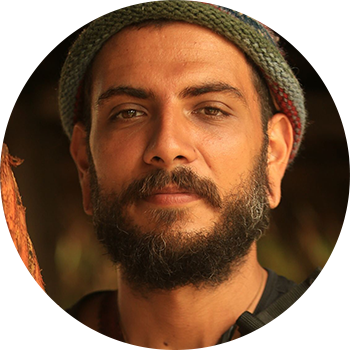
Patrick Barber lives in Buena Vista, Saskatchewan, Canada and works full-time as an Indigenous Health Policy Analyst. His book Psychedelic Revolutionaries recounts Saskatchewan’s psychedelic research in the 1950s and 60s and the related work and theories of Humphry Osmond, Abram Hoffer, and Duncan Blewett.

Amy Bartlett (she/her) is a feminist, lawyer, community organizer and psychedelic researcher exploring the role that mystical psychedelic experiences play in individual and communal healing through an intersectional lens.
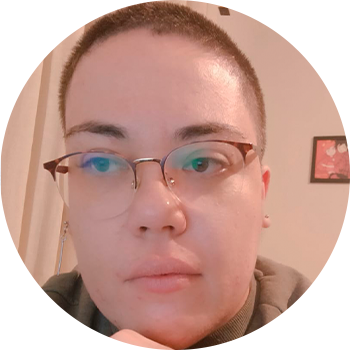
Pietro Benedito is a sociologist. He wrote his doctoral thesis on sociology of religion about gender and religion in the Santo Daime.
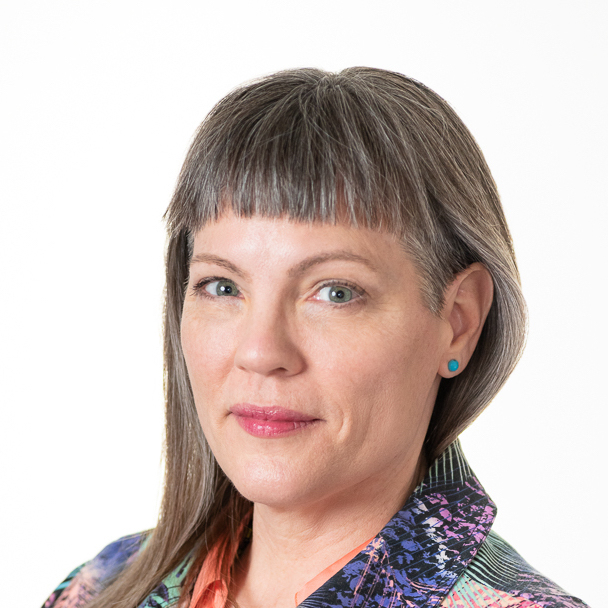
Samantha Black (she/they) is a PhD candidate in psychology at the University of Saskatchewan and a lecturer at First Nations University of Canada. Her research centers on community health, 2SLGBTQI+ wellness, grief process, creative therapies, and decolonizing strategies.

Lana Cook, Ph.D, is a cultural scholar, writing a history of women’s contributions to psychedelic aesthetics. She is also Assistant Director of Strategic Initiatives at MIT Open Learning.
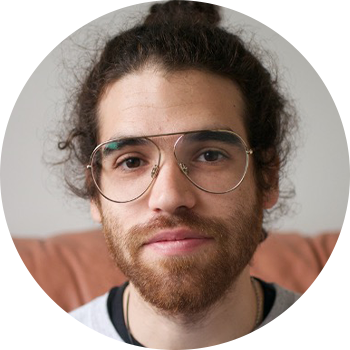
Tal Davidson is a PhD student in the Historical, Theoretical, and Critical Studies of Psychology program at York University in Toronto. His current work explores Ecopsychology as a framework that combines social and ecological justice with personal healing and psychotherapeutics.

Isabel Santana de Rose is a Brazilian anthropologist and a researcher in the field of the ayahuasca religions for over twenty years. Her P.hD. dissertation focuses on the emergence of contemporary shamanic networks in Brazil.

Zoë Dubus is a doctoral student in contemporary history in France. She studies the transformations of medical practices and health policies in relation to the use of psychotropics (morphine, cocaine, and LSD), from the 19th century until the present.

Erika Dyck, Ph.D. (History), is a Professor at the University of Saskatchewan, and a Canada Research Chair in the History of Health & Social Justice. Erika is also part of Chacruna’s Board of Directors and hosts the series “Women in the History of Psychedelic Plant Medicines.”

Taylor Dysart (@DiceArtTaylor) is a PhD candidate in the Department of History and Sociology of Science at the University of Pennsylvania. Her research focuses on the practices, knowledges, and relations that shaped hallucinogenic plant research in the northwestern Amazon.

Ana Gretel Echazú Böschemeier, Ph.D in anthropology, specializing on gender, race, human rights and collective health. She works as Assistant Teacher at the Departament of Anthropology UFRN, Brazil.
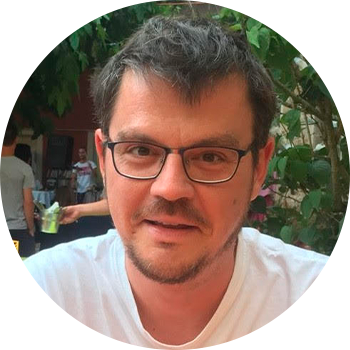
Chris Elcock is an award-wining independent historian of psychedelics who has recently co-founded the Lyon Psychedelic Society. He is finishing a book on the social history of psychedelics in NYC.

Andrea Ens is a PhD student in History at Purdue University. Her research interests broadly include the history of sexuality, psychology, and psychedelics in twentieth-century North America.

Patrick Farrell is an editor and writer living in Toronto. He is part of the Chacruna Chronicles editorial team, where he supports our series on the history of women in psychedelics.

Ibrahim Gabriell is Communications and Editorial Associate of Chacruna Latinoamérica in Mexico. He is also co-founder of Vía Synapsis and a member of the psychonaut collective MindSurf.
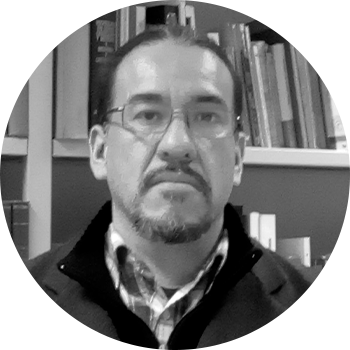
Osiris Sinuhé González Romero. PhD in Meso-American Studies from Leiden University, he has been involved in psychedelic research since 2008. He is working on the book: “New Essays on History and Philosophy of Psychedelics.” He is part of the Chacruna Chronicles editorial team.

Ivo Gurschler is a philosopher currently writing his PhD on the “Genealogy of Mescaline” at the Academy of Fine Arts, Vienna. Since 2015, he is a coeditor of the monograph series Schriften zur Verkehrswissenschaft (formerly TUMULT). Besides being a freelance writer, he is working part time as project manager for an educational publishing company.

Andrew Jones is a PhD candidate at the University of Toronto. His research examines the history of psychedelic drugs in child psychiatry and is supported by funding from the Social Sciences and Humanities Research Council.

Bia Labate has a doctoral degree in anthropology. She published 24 books about psychedelics and sacred plants, shamanism, religion, rituals, drug politics and social justice. She is co-founder and executive director of the Chacruna Institute.

Stephen Lett is a Post-Doctoral Fellow in the History of Medicine at the University of Saskatchewan. His research explores practices with music in psychotherapy.

Glauber Loures de Assis has a PhD in Sociology. He is currently the president of Céu da Divina Estrela, a brazilian Santo Daime church, and member of Chacruna’s Ayahuasca Community Committee.
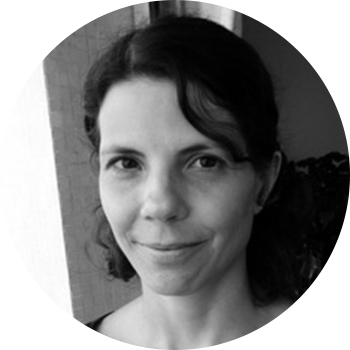
Fabiana Maizza is a professor of anthropology at the Federal University de Pernambuco, and she has been working with the Jarawara community since 2004.
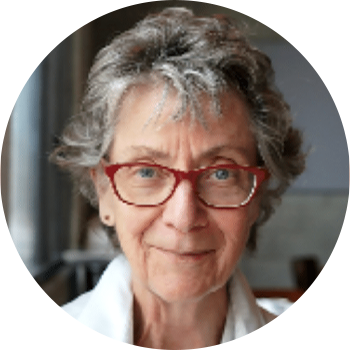
Mariavittoria Mangini, Ph.D., FNP, has written extensively on the impact of psychedelic experiences in shaping the lives of her contemporaries and worked closely with many of the most distinguished investigators in this field.

Raizza Marins is a musician, music educator, and ethnomusicologist at the Federal University of the State of Rio de Janeiro (UNIRIO). Her main area of interest is music in the universe of the ayahuasca and the plants of power.
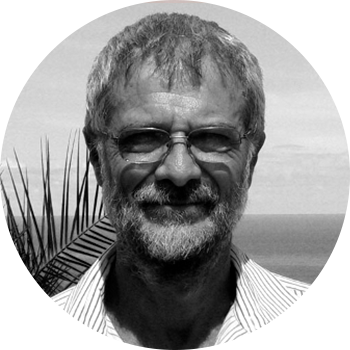
Edward MacRae is Associate Professor at the Department of Anthropology and Ethnology and is an Associate Researcher at the Center for Studies and Therapy of Drug Abuse-CETAD, both at the Federal University of Bahia. He is the author of more than 40 articles and books.
Doménica Medina is an international student at the University of Saskatchewan. She is Ecuadorian and her degree is microbiology and immunology with a minor in history. She is interested in the history of medicine and psychedelics.

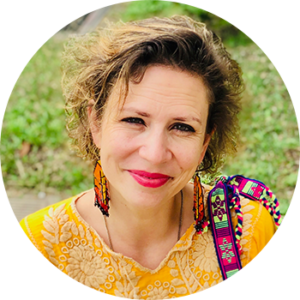
Diana Negrín, Ph.D, is a geographer, educator and curator. She currently serves on the board of the Wixárika Research Center and teaches at the University of San Francisco and the University of California, Berkeley. She is Associate Director of Chacruna Latinoamérica in Mexico.

Nidia Olvera-Hernández is a historian and anthropologist focused on psychoactive substances. She is a Ph.D. from Mora Institute in México City, where she research about the history on drugs.
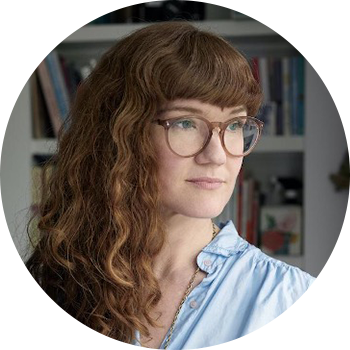
Geneviève Paiement is a screenwriter, poet and former journalist whose work has appeared or is forthcoming in Poetry London, The Literary Review of Canada, The Globe and Mail, The New York Times, The Guardian, Vice and elsewhere.
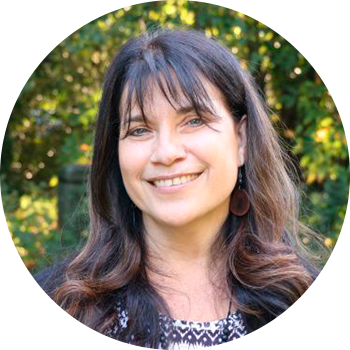
Daniela Peluso is an Emeritus Fellow in social anthropology at the University of Kent and member of the Board of Directors of the Chacruna Institute for Psychedelic Plant Medicines. Her publications focus on indigenous ontologies, urbanization, violence and relatedness.
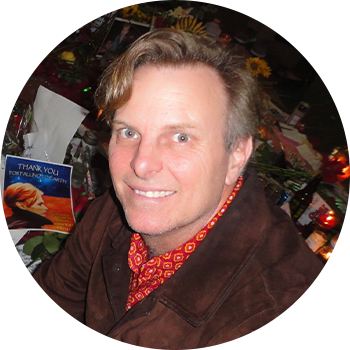
Dr. James Penner is the editor of Timothy Leary: The Harvard Years (2014) and the author of Pinks, Pansies, and Punks: The Rhetoric of Masculinity in American Literary Culture (2011). He is also a Contributor to the Los Angeles Review of Books and Lucid News.
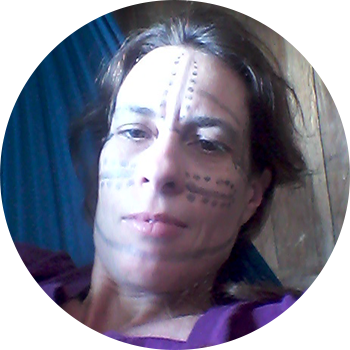
Laura Pérez Gil is a professor of anthropology and director of the Museum of Archeology and Ethnology at the Federal University of Paraná. She carried out research on social organization and shamanism among the Yaminawa of the Peruvian Amazon.

Klarissa Platero, Ph.D in sociology, professor in the National Security department at the Federal Fluminense University (UFF). She is the coordinator of the center for studies and research on subjects, society and state (Nepsse). Her research of mixed methods focuses on violent deaths, forensics, and criminal justice in Brazil.

Lígia Platero has an interdisciplinary formation in Anthropology, history, and Latino American studies. She is a Ph. D in human sciences with an emphasis in Anthropology at the Federal University of Rio de Janeiro (UFRJ). Her research involves inter-ethnic relationships and ayahuasca.

Naomi Rendina (@NaomiRendina) recently earned her PhD in History from Case Western Reserve University. She is a Lecturer in the Department of Health Sciences at California State University, East Bay, and is the Social Media Coordinator for the American Institute of the History of Pharmacy (@histpharm) and the Points Blog (the blog of the Alcohol and Drugs History Society, @PointsADHS).

Jacqueline Alves Rodrigues has a master’s degree in anthropology at the Federal University of Minas Gerais (UFMG). She is co-founder of the Céu da Divina Estrela, a Santo Daime church in Minas Gerais, Brazil. She is an actress and a mother of two children. She is also a member of the ICEFLU Women’s Working Group, formed to safeguard women’s safety and female participation in Santo Daime. She develops academic research on Santo Daime and ayahuasca.

Dr. Stacy B. Schaefer is Professor Emerita in the Department of Anthropology, California State University, Chico. She has researched and published on peyote among the Huichol Indians and the Native American Church for more than three decades.

Stephanie Schmitz is the Betsy Gordon Archivist for Psychoactive Substances Research at the Purdue University Archives, working closely with donors in transferring materials to the Archives, facilitating access and use of these materials, and collaborating with educators to incorporate these materials into their teaching.
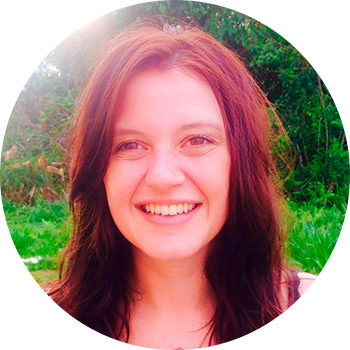
Emily Sinclair is a social anthropology PhD. candidate with Durham University, UK. She is member of Chacruna’s Ayahuasca Community Committee and is involved in Chacruna’s initiative on raising awareness around sexual abuse. She currently lives in Iquitos.
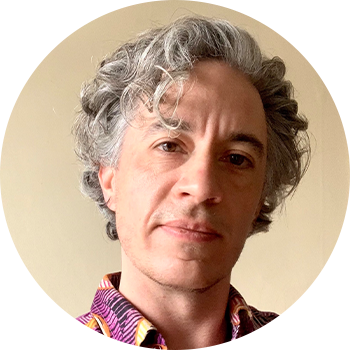
Alexis Turner is PhD candidate in the History of Science at Harvard University. Alexis’ current research is on the early scientific and political history of LSD in the United States.

Jasmine Virdi is a freelance writer and editor. Since 2018, she has worked for the independent publishing company Synergetic Press. She also serves as a writer for Chacruna, Psychedelics Today, and Lucid News.

Monnica T. Williams, Ph.D., ABPP, is a board-certified clinical psychologist and Associate Professor at the University of Connecticut. She has published over 100 articles on ethnic minority mental health, psychopathology research, and psychedelic therapy. She is part of Chacruna’s Racial Equity and Access Committee.
Take a minute to browse our stock:
Did you enjoy reading this article?
Please support Chacruna's work by donating to us. We are an independent organization and we offer free education and advocacy for psychedelic plant medicines. We are a team of dedicated volunteers!
Can you help Chacruna advance cultural understanding around these substances?











